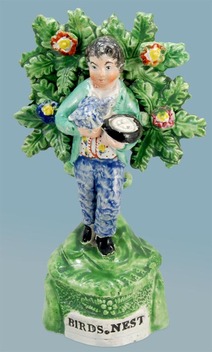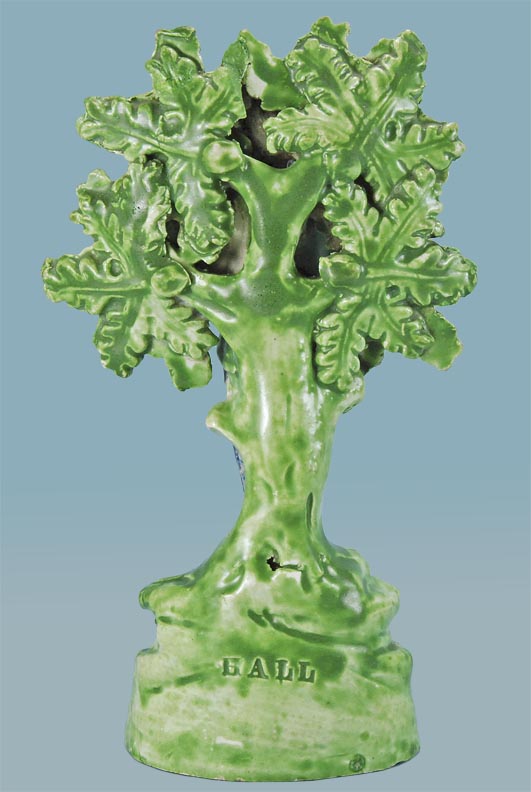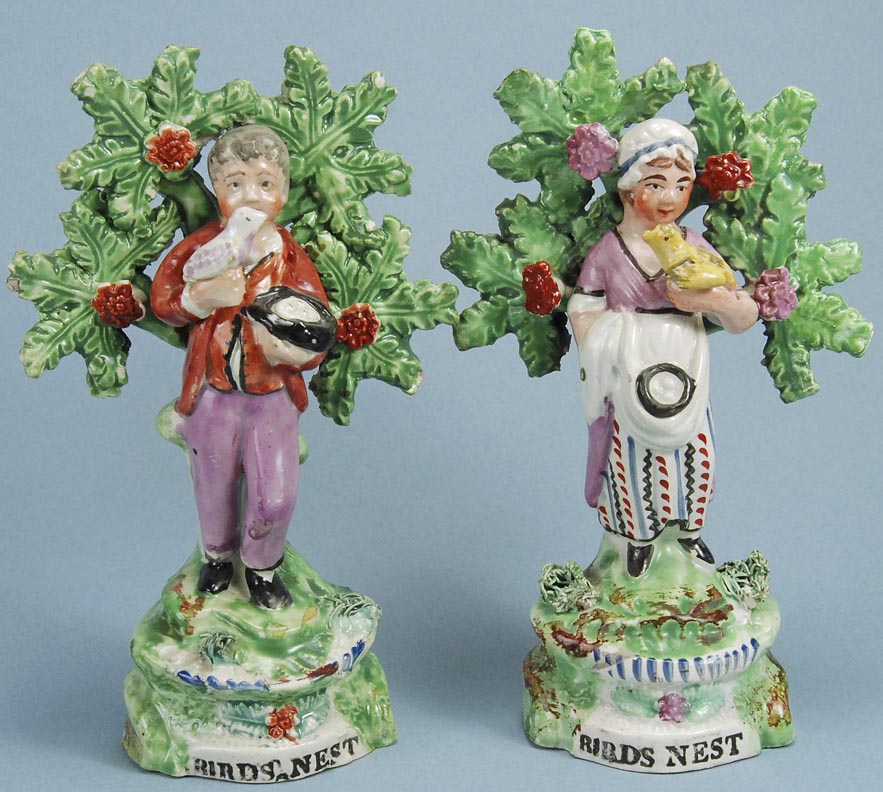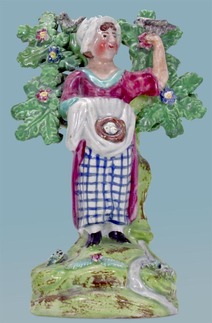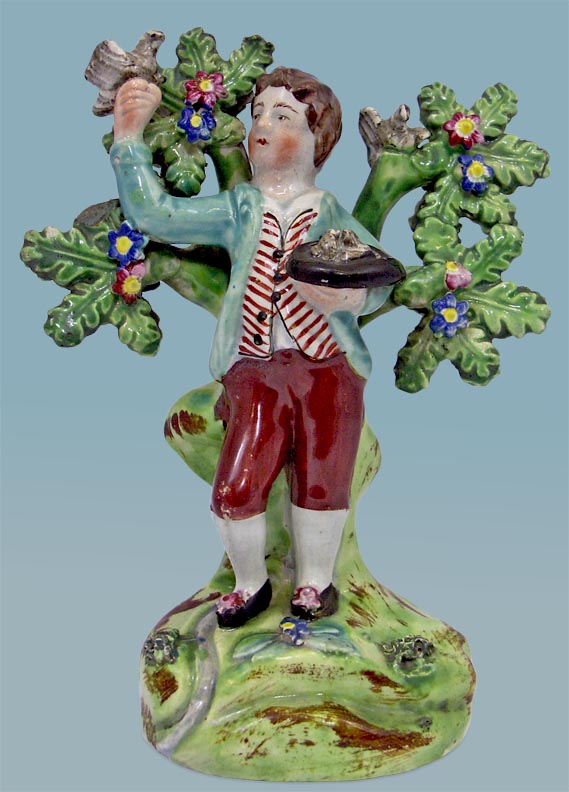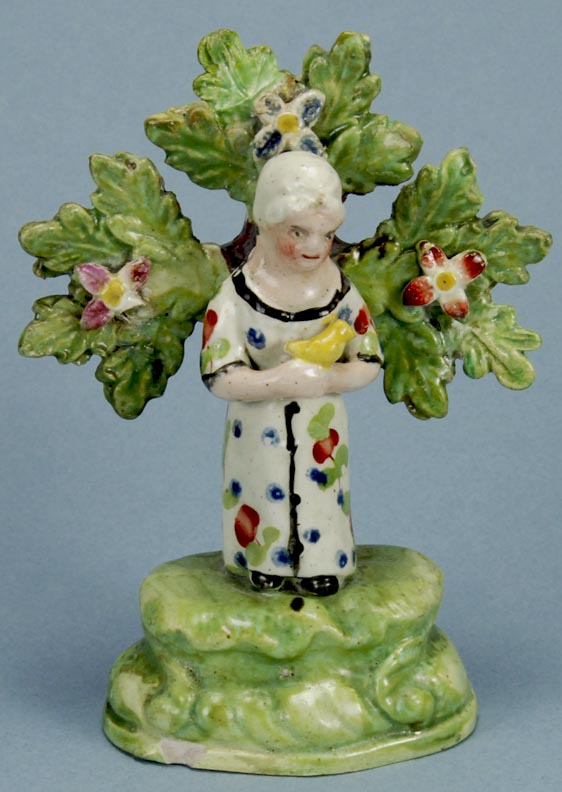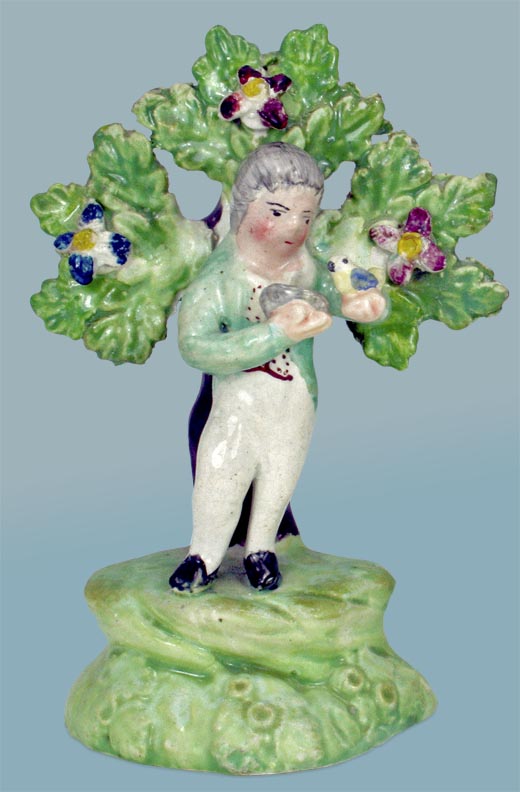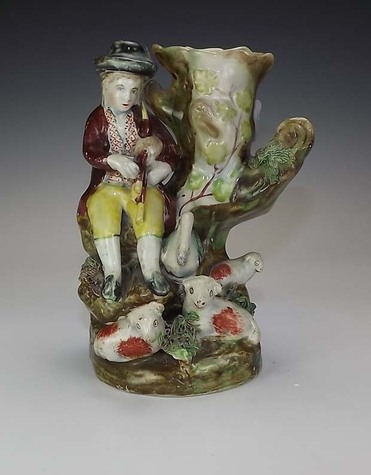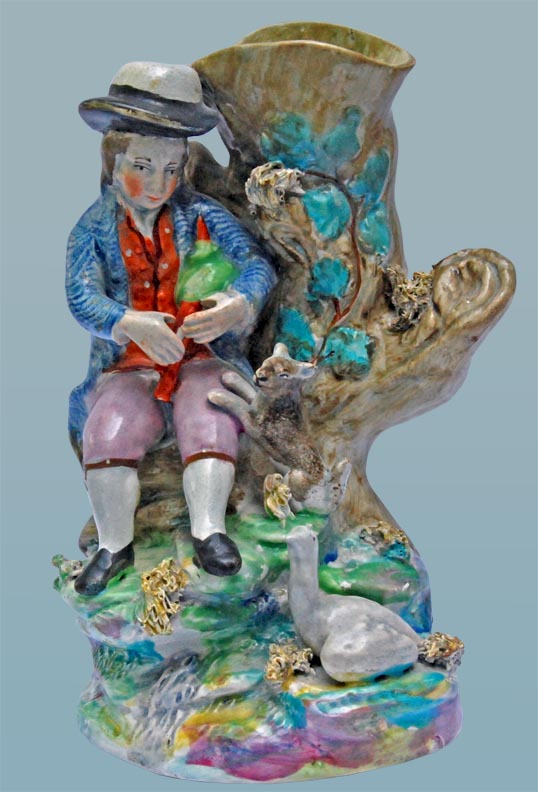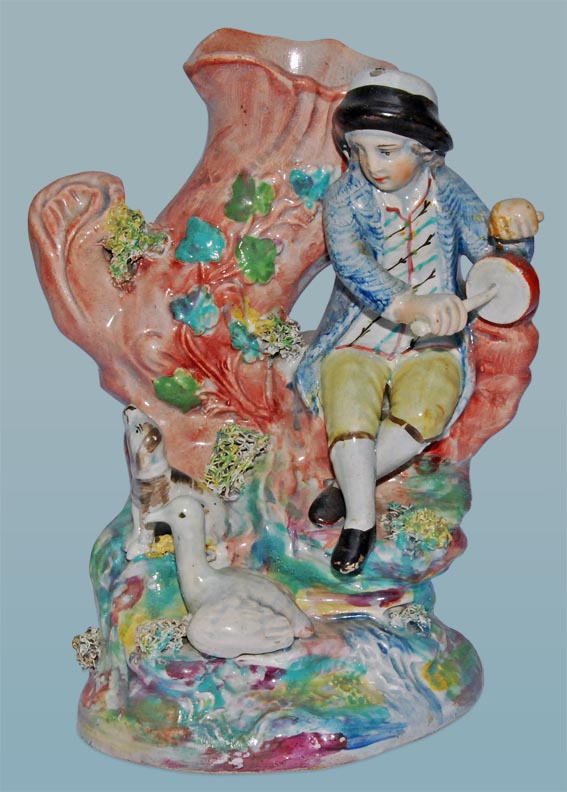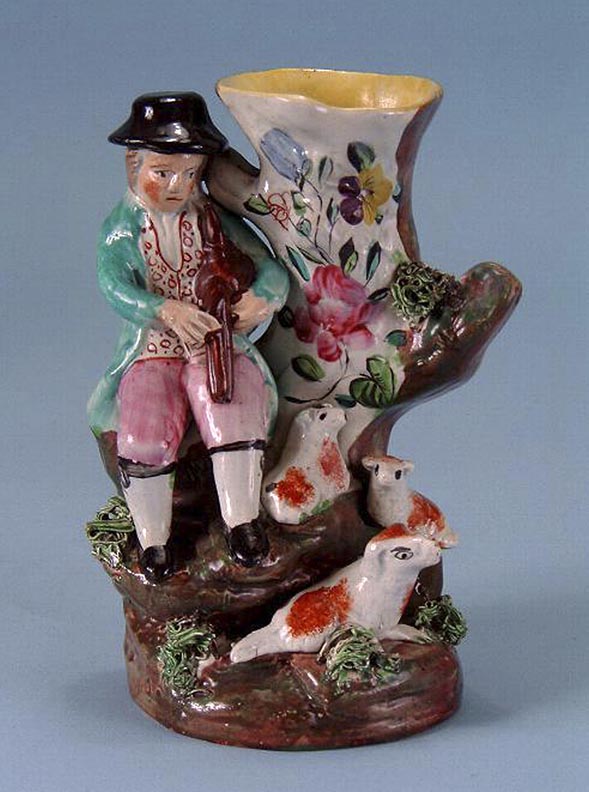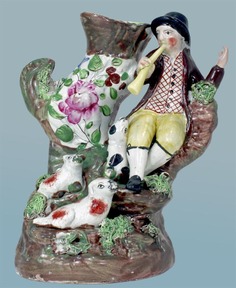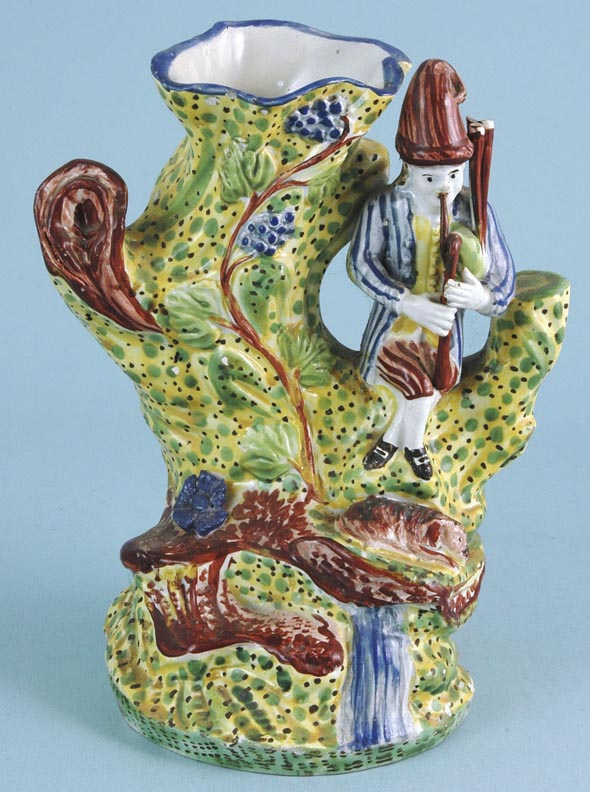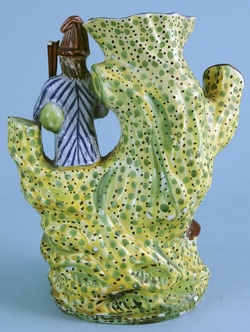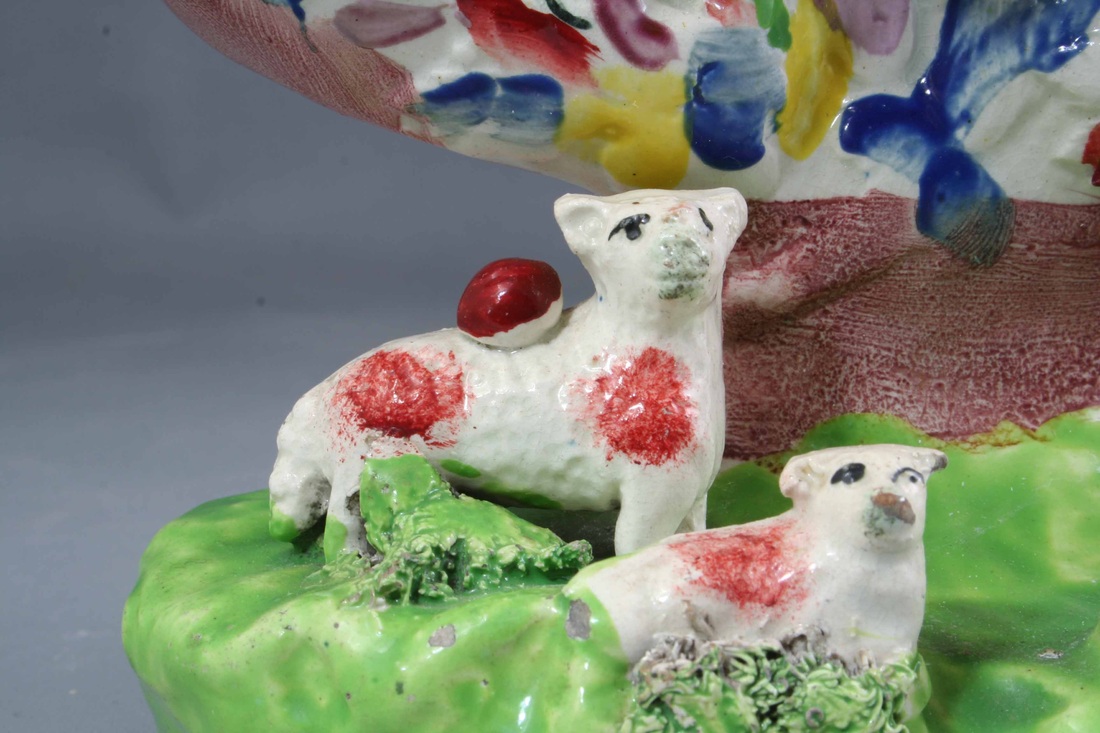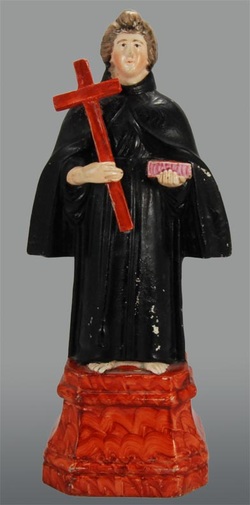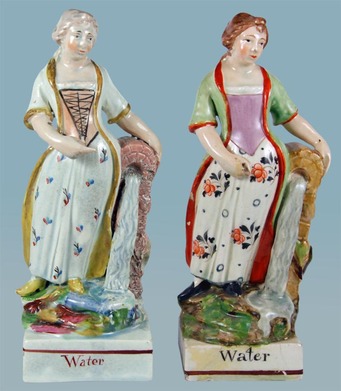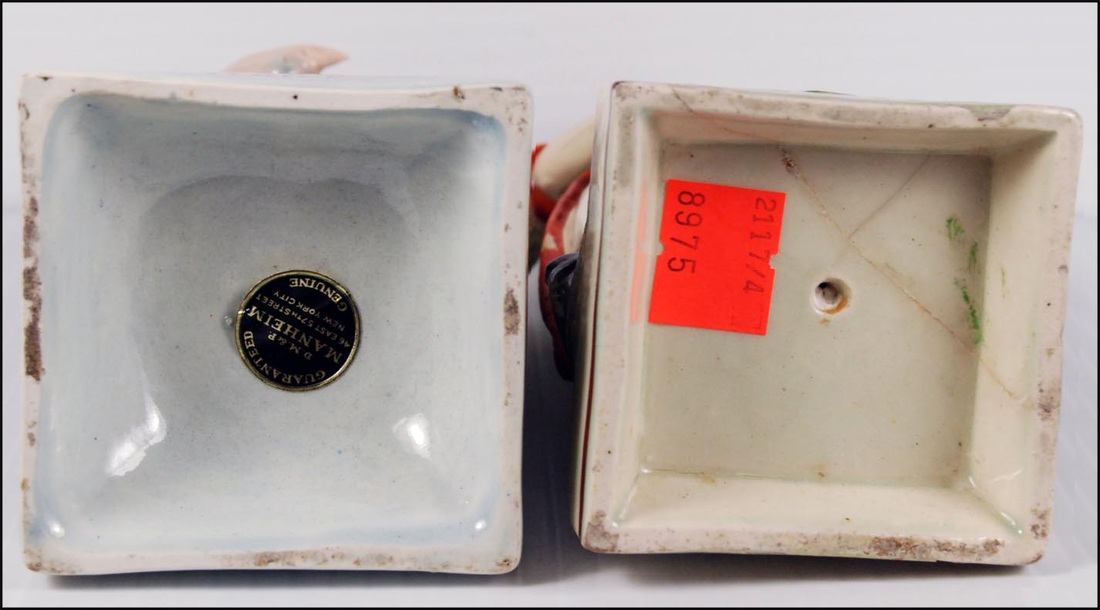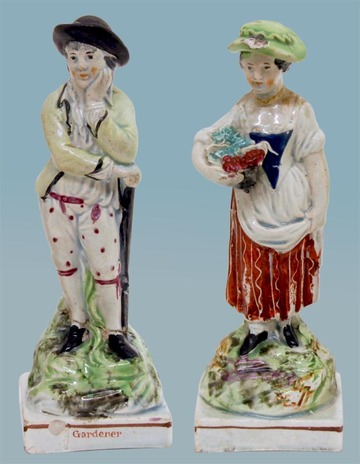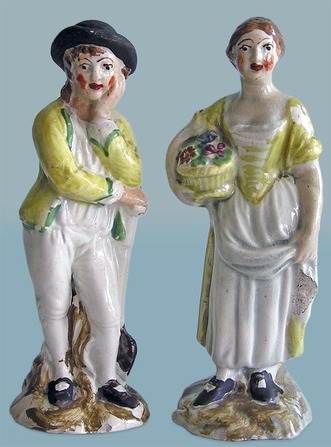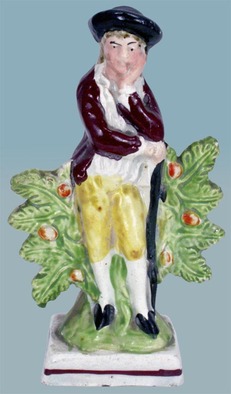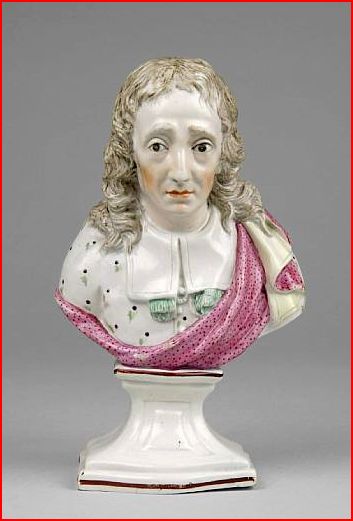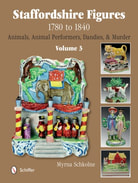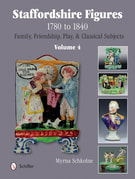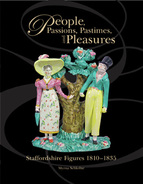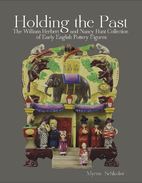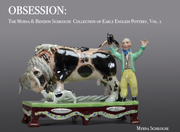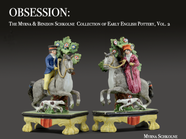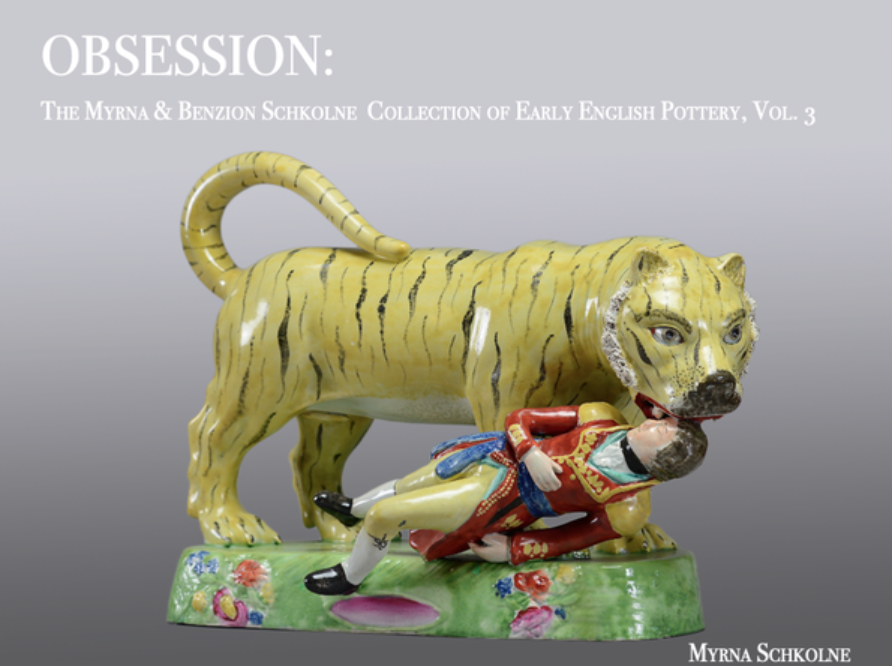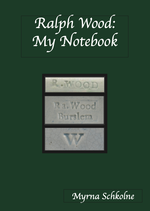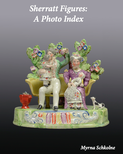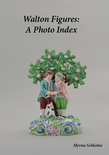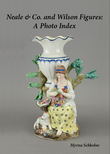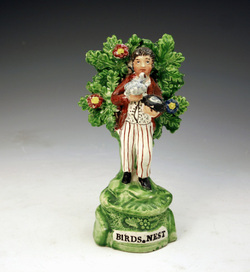
Its never difficult to find inspiration for my blog when I look at John Howard's site. This weekend, he added this charming BIRDS NEST figure.. The figure is impressed HALL on the back. This is thought to be the mark of Samuel Hall, who was active from around 1818 into the 1850s. Marked HALL figures are not that common, so the mark is rather special.
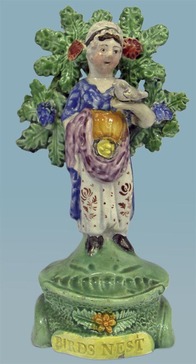
I think that this little BIRDS NEST girl is also possibly made by Hall, but it is not marked. Why do I think she may be a Hall figure? Having looked at lots of figures with this rather common bocage form, I have noticed that red and blue carnations occur routinely on Hall figures.
John Walton, the most prolific producer of marked figures, made quite different bird nesters. The figures below are both marked WALTON.
Lest the abundance of pictures misleads you into thinking that BIRDS NEST figures grow on trees, think again. These figures are all difficult to find, particularly in reasonable condition. If you see one and you like it, grab it. Despite their rarity, I have 61 images lined up for the Bird Nesting chapter in my new book. In the captions, I attribute unmarked figures when possible, often pointing out some of the features that lead to my conclusion. This work would not be possible without the extraordinary generosity of all of you who have shared images with me. In the coming weeks, I will be approaching my cut-off date for new images. If you have been meaning to send me a picture, it is not too late, and I would love to hear from you.
